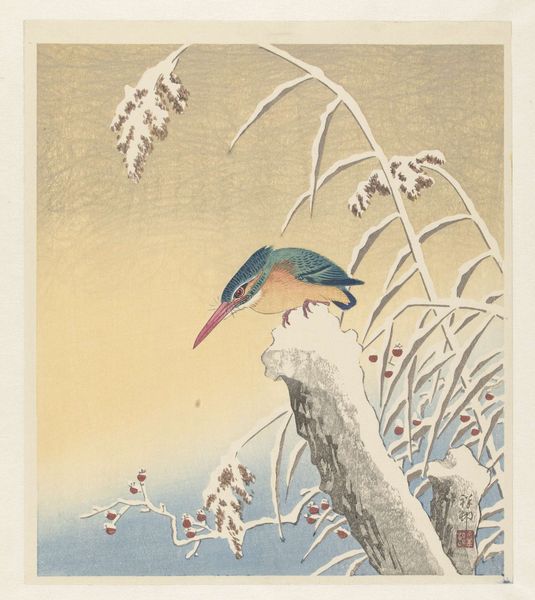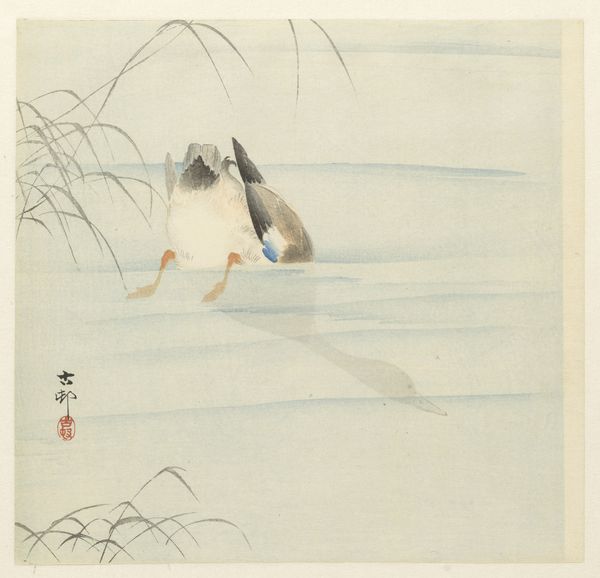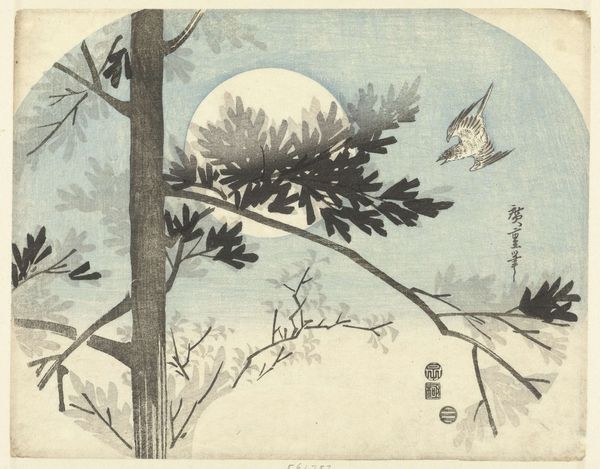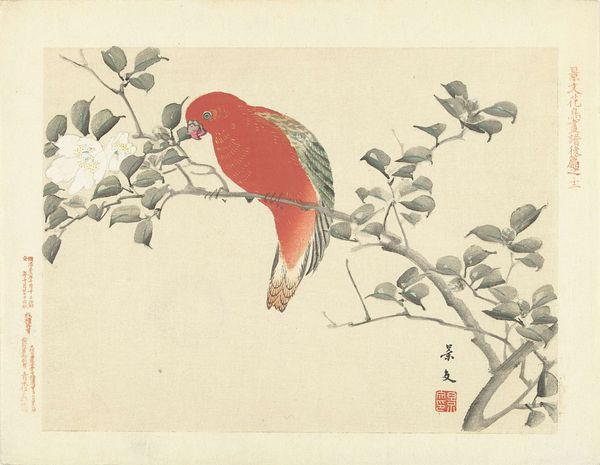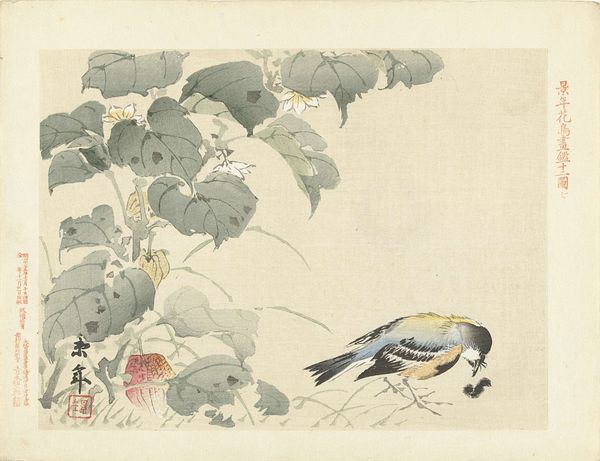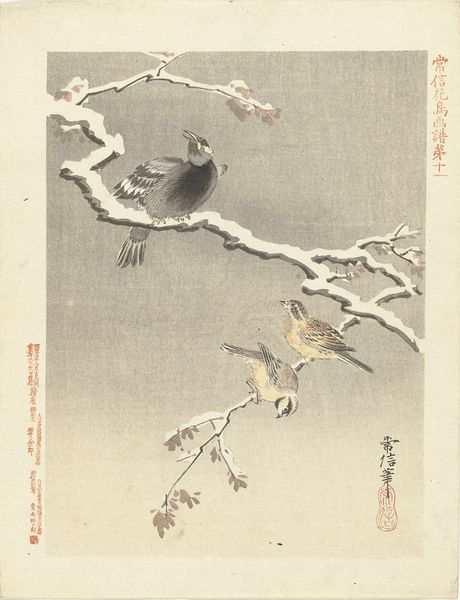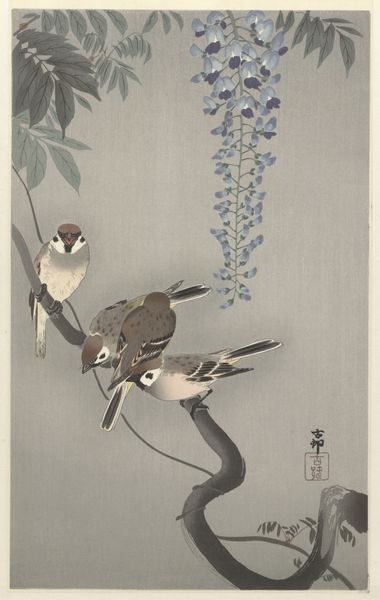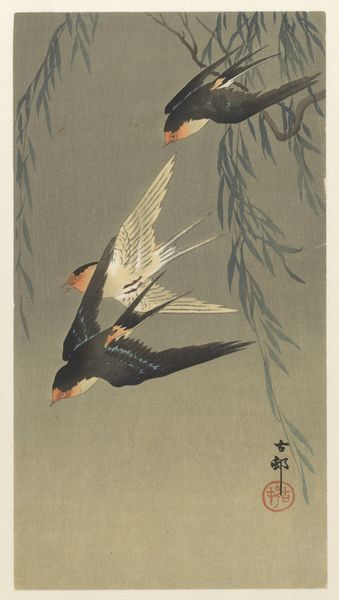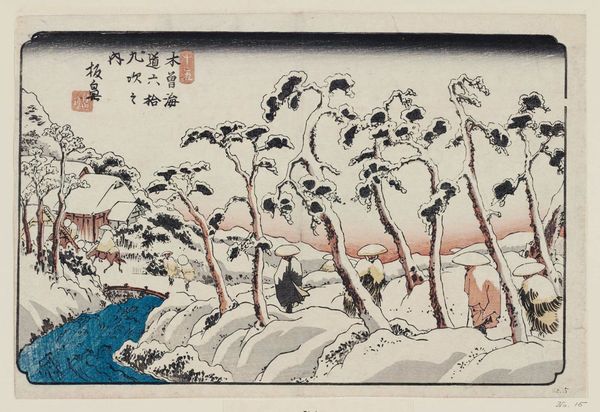
Dimensions: 10 13/16 x 11 1/4 in. (27.4 x 28.5 cm) (sheet)
Copyright: No Copyright - United States
Editor: This woodblock print, "Bird in Snow," by Takahashi Bihō, is estimated to be from 1928-1930. It feels both delicate and stark at the same time. The snow is so heavy it seems to weigh everything down. What symbolic reading would you give it? Curator: Consider the bird itself. Across many cultures, birds symbolize the soul, or freedom. But here, it’s very small against this massive field of snow, making it appear vulnerable. Editor: Like a soul struggling in a cold world? Curator: Perhaps. And look at the bare branches weighed down by snow, next to berries, which are red, a very important color, representing vitality, fire, strength. Doesn't it make you wonder if Bihō is creating a space that offers contrasting imagery? A sense of hope versus struggle for survival? Editor: I can see that, like, the bird’s footprints leading somewhere… maybe towards warmth, food, a future? Curator: Exactly. And the visual weight… how does the artist draw your eye? Editor: Well, the bright berries certainly grab attention first. They almost pop against all that white and gray. But then, I see the tiny bird, then those tracks. Curator: Bihō uses this symbolic opposition, stark cold versus vital color, and visual arrangement, to evoke a deep sense of hope amidst adversity. The artist masterfully conveys a sense of resilience, wouldn't you say? Editor: I agree. Thinking about the colors as symbols really shifted my perspective. It's not just a pretty picture of a bird in winter; it's a statement about life! Curator: And memory! Woodblock prints have always carried the cultural memory and continuity forward in Japanese culture, which enhances the artwork. There's more to it than meets the eye at first glance, isn't there?
